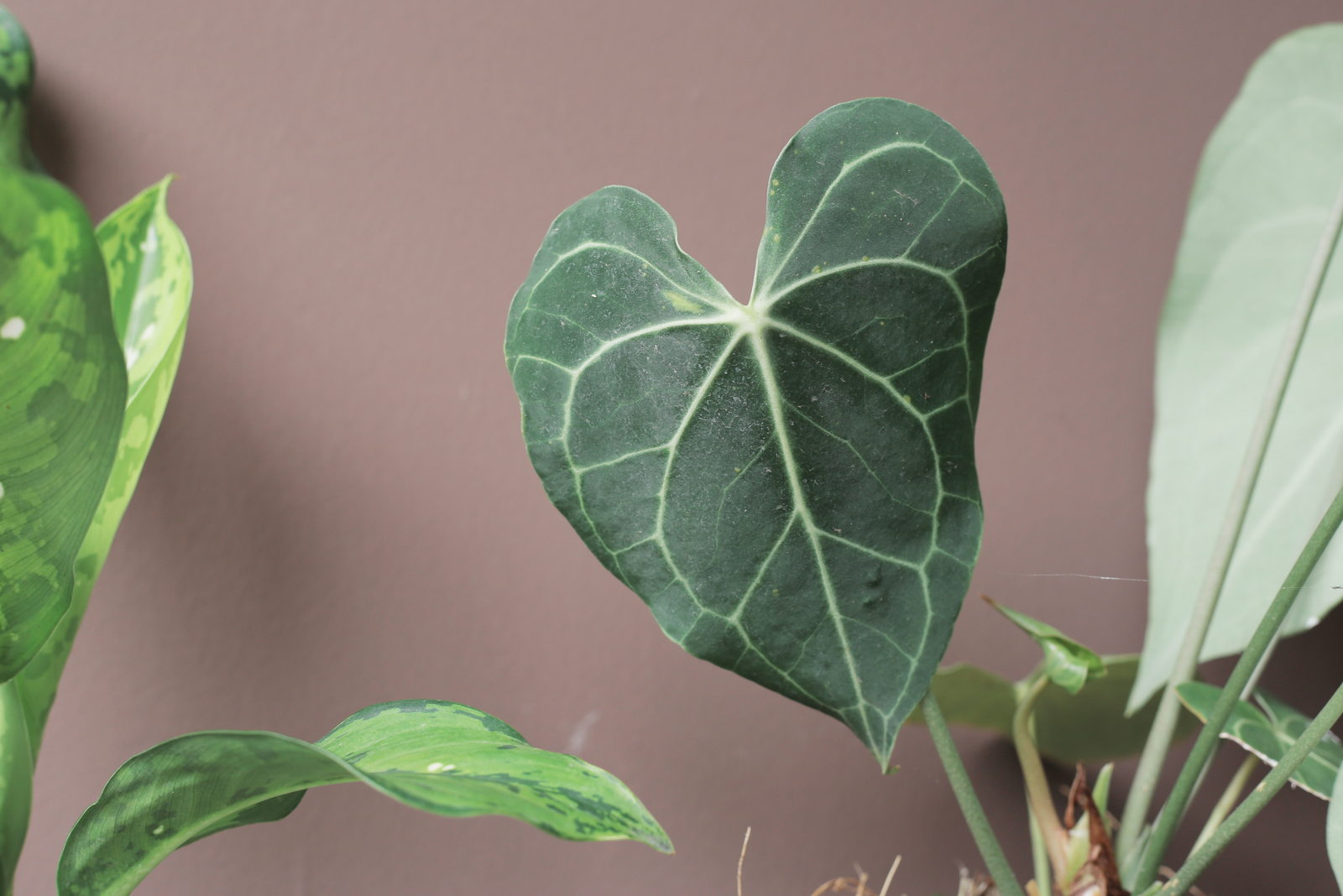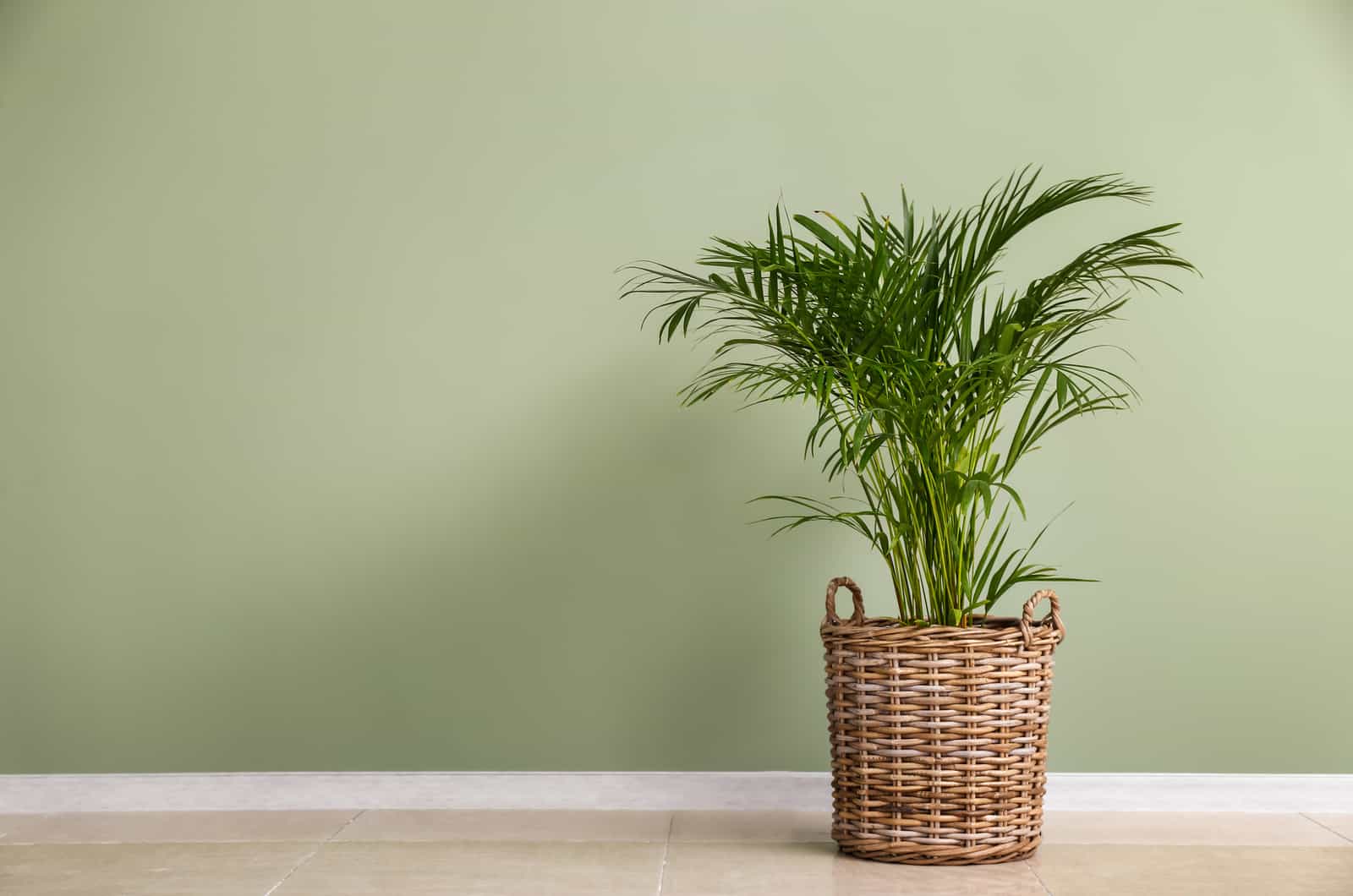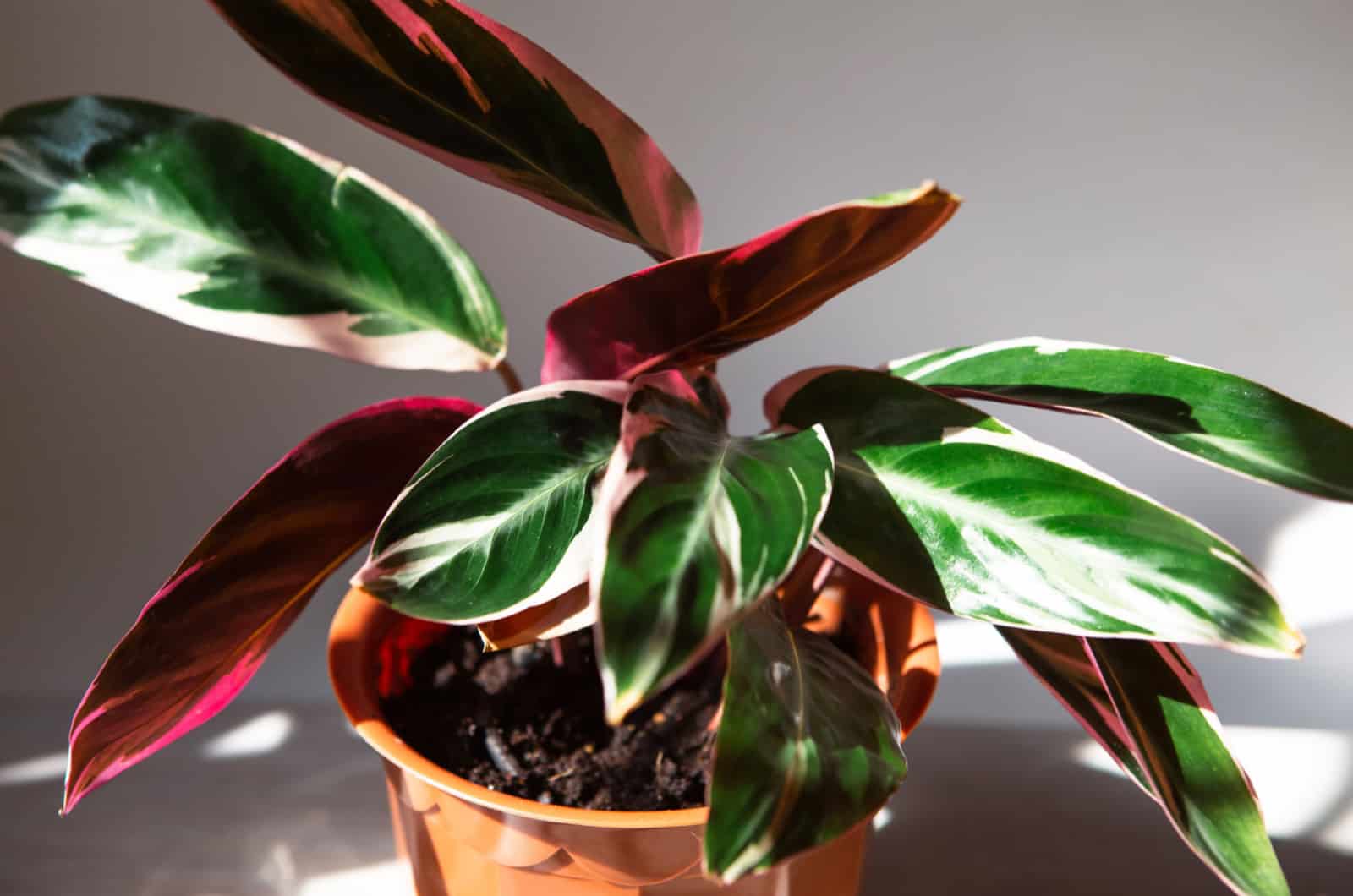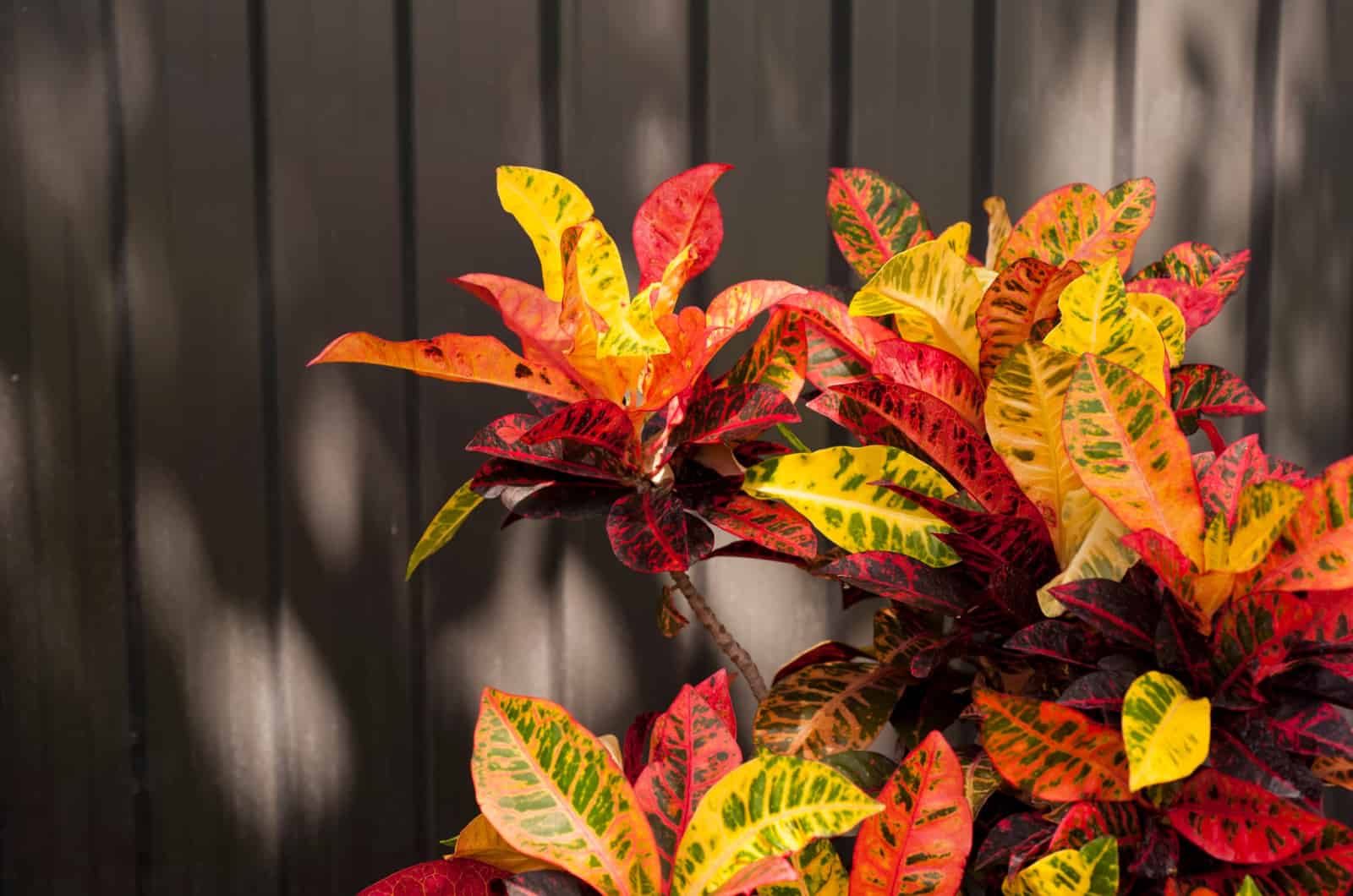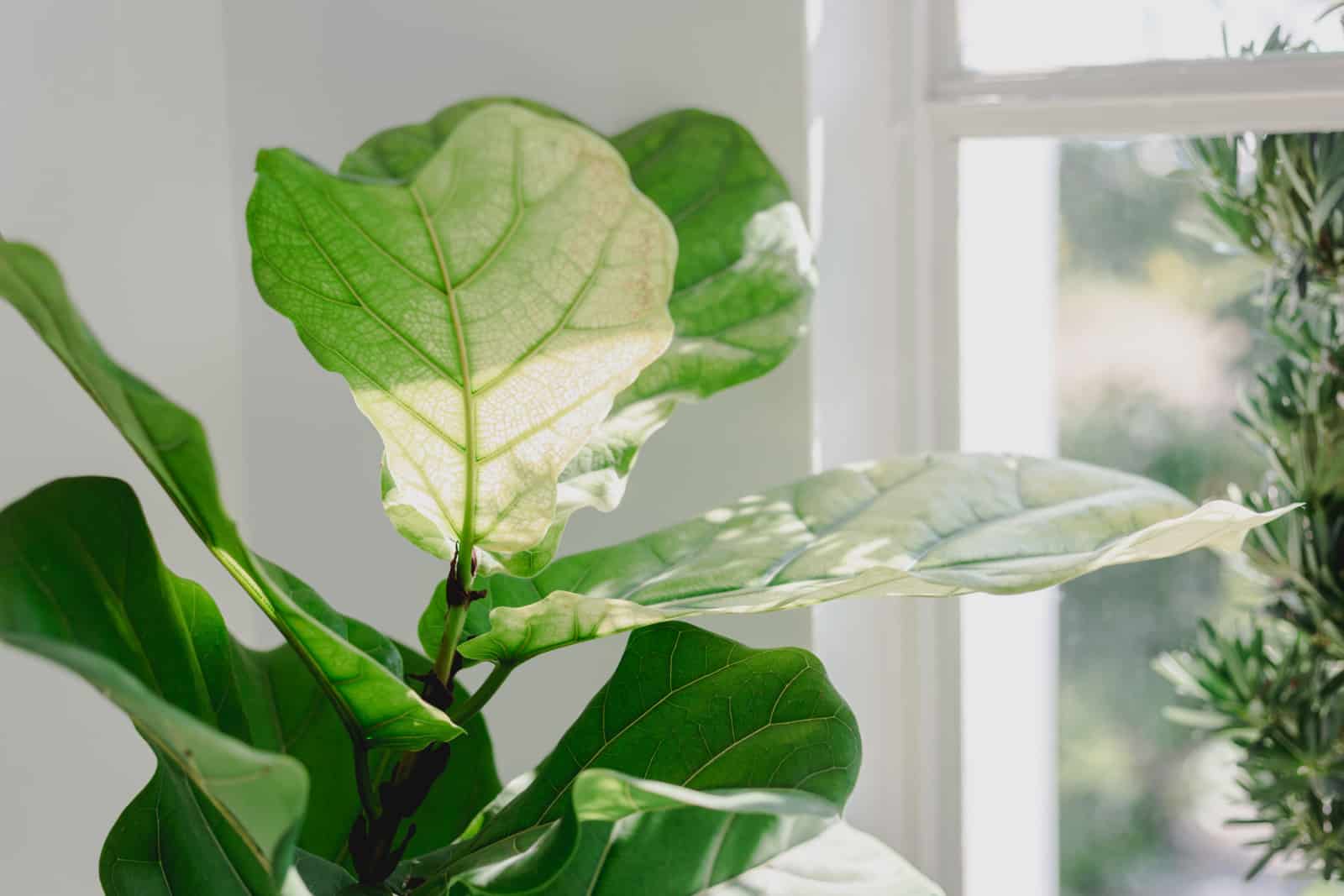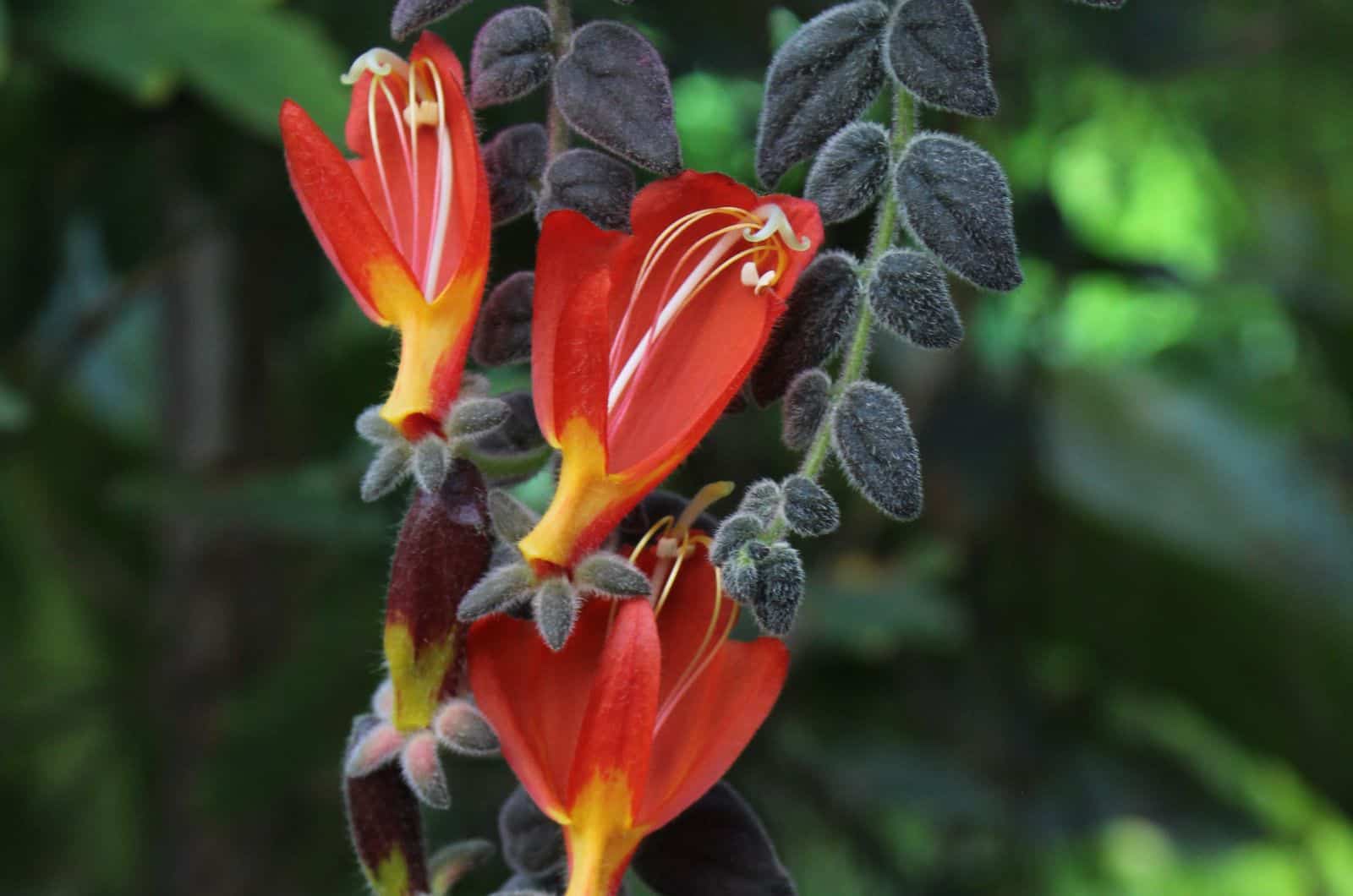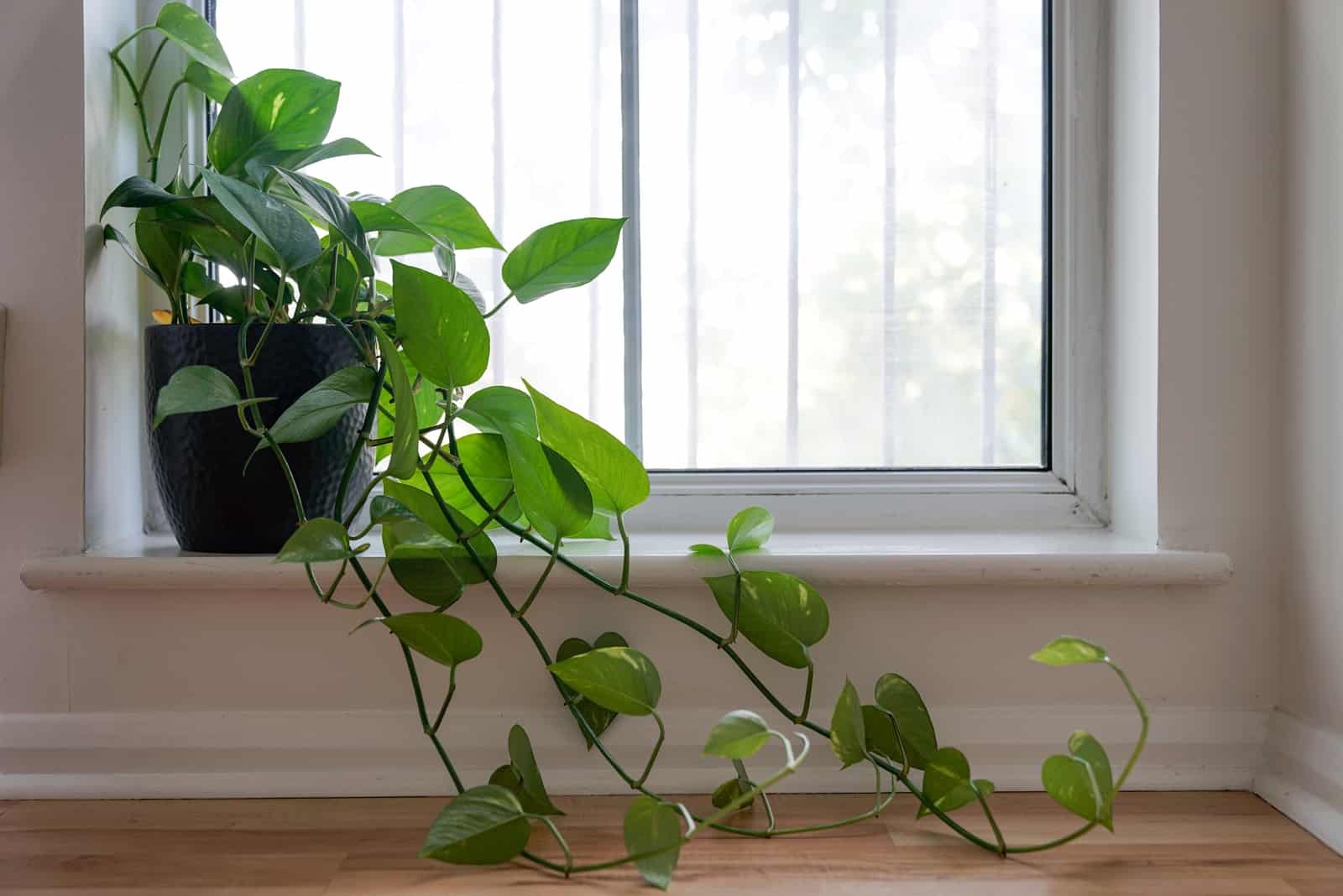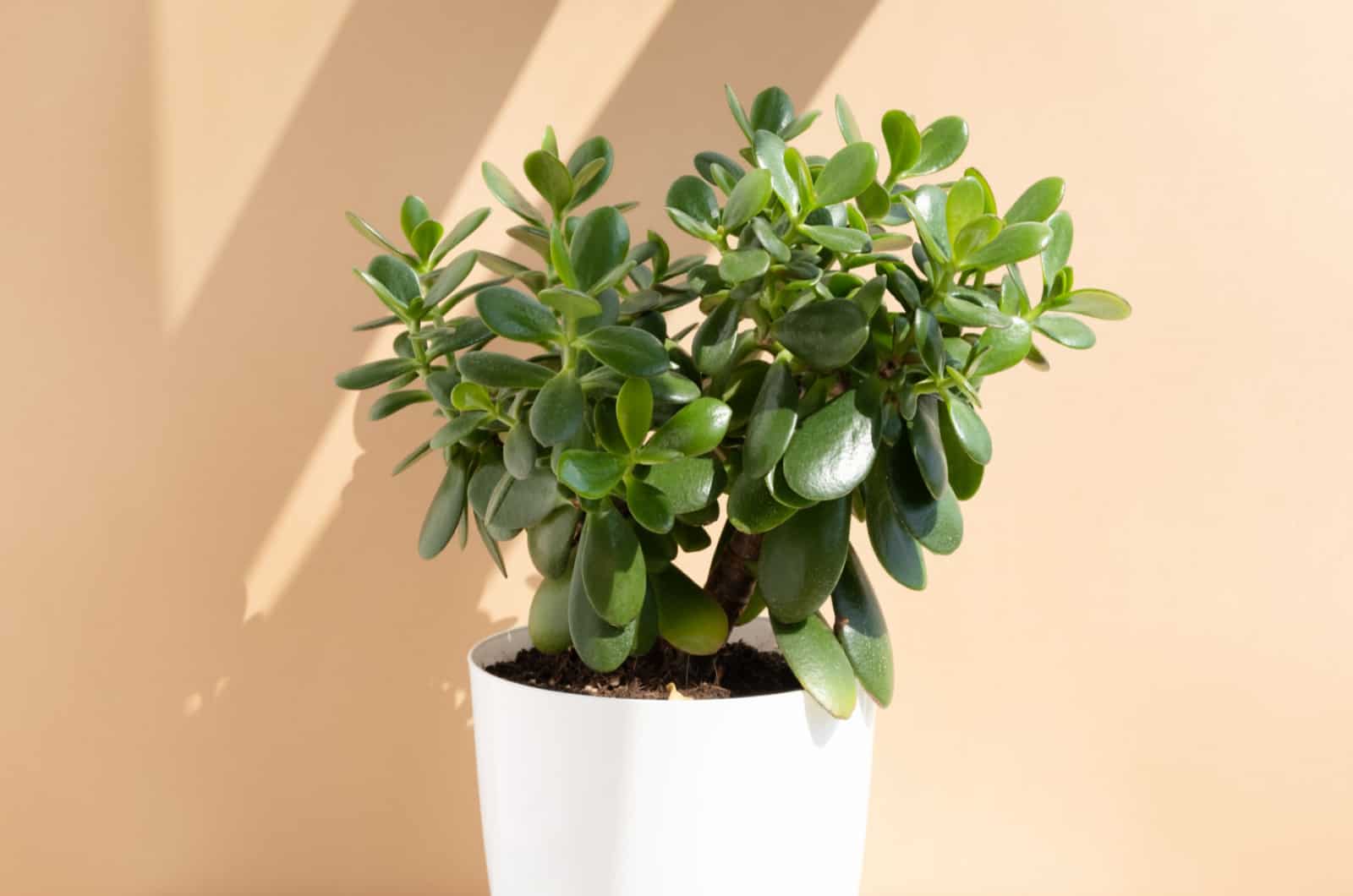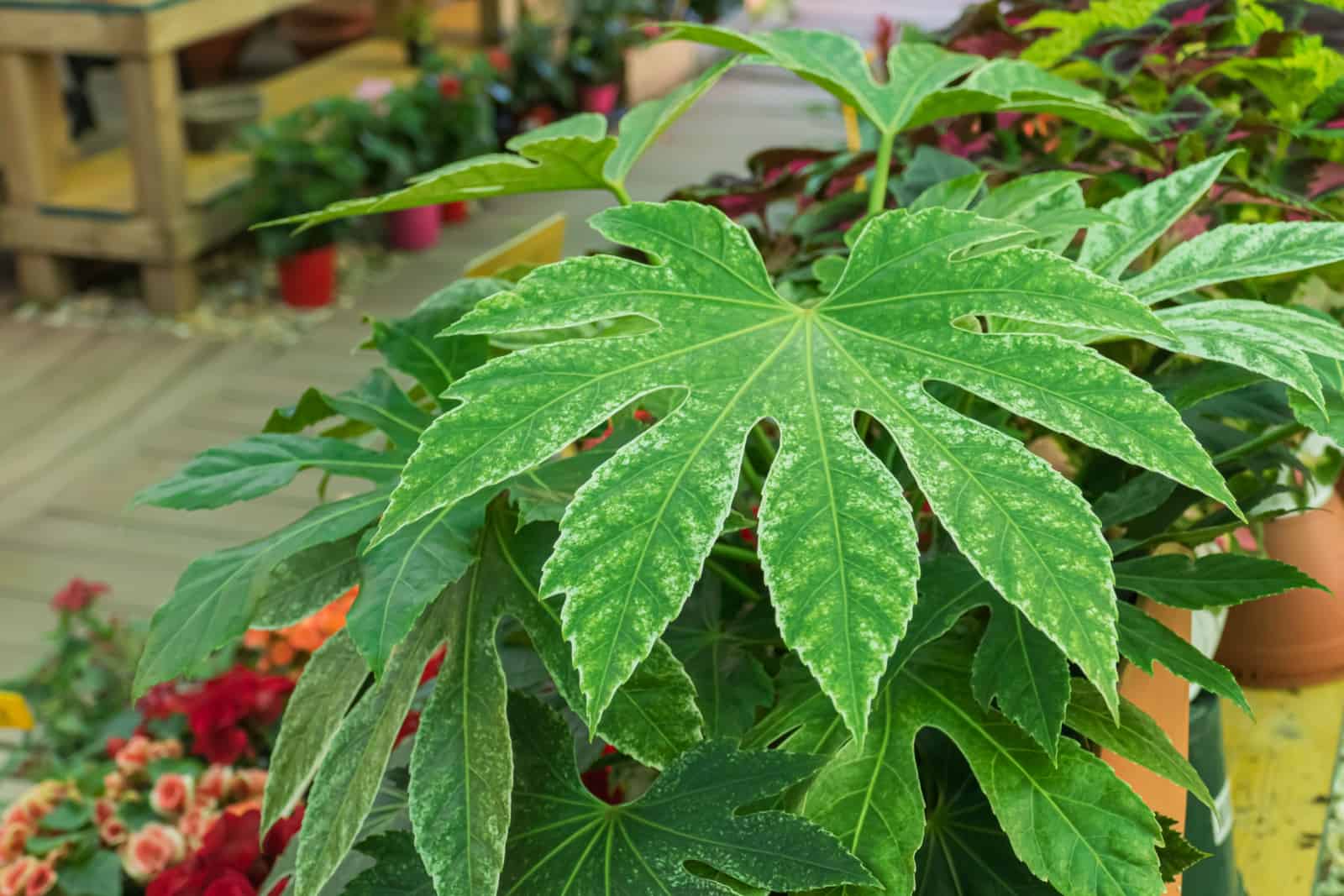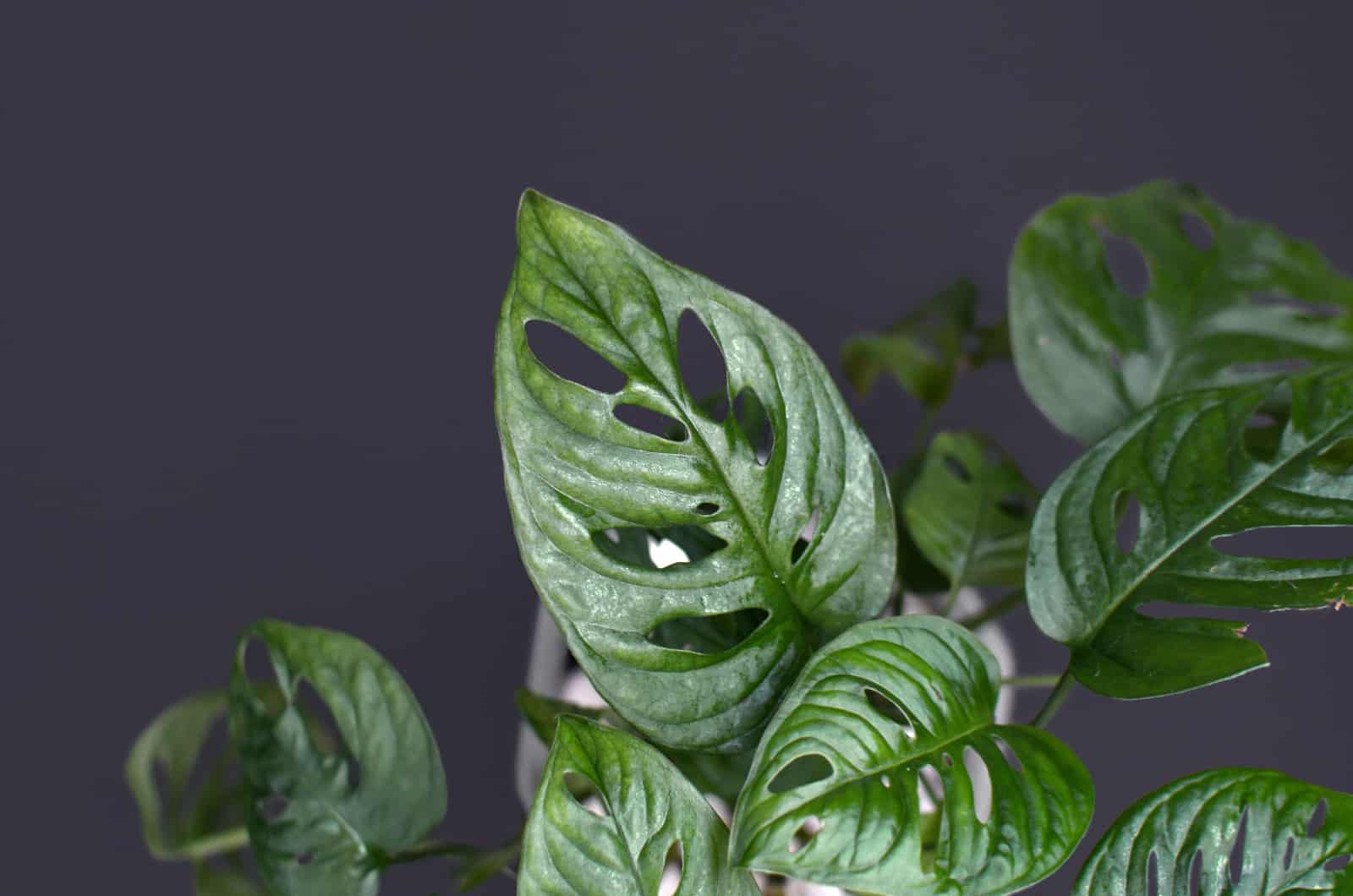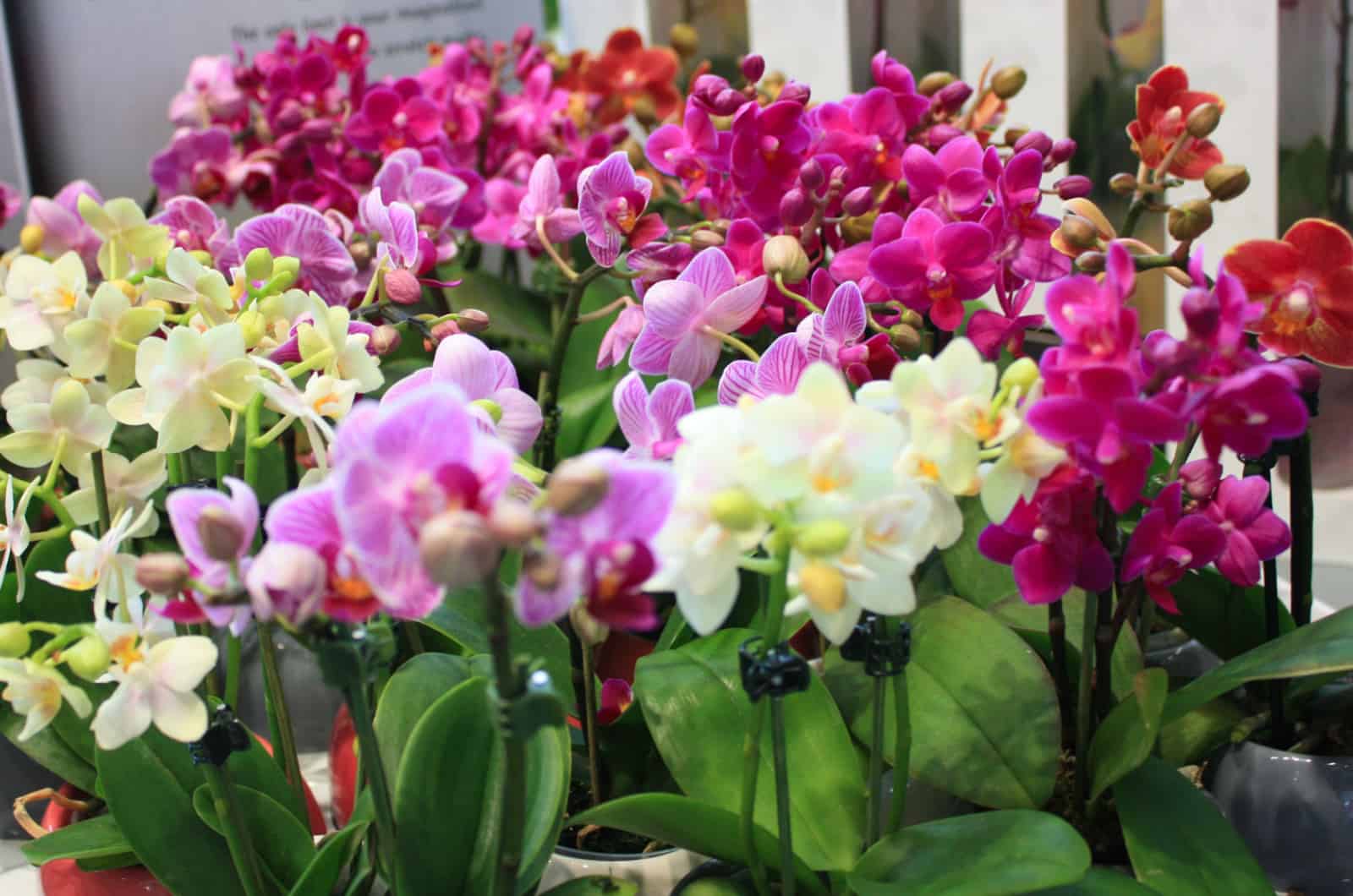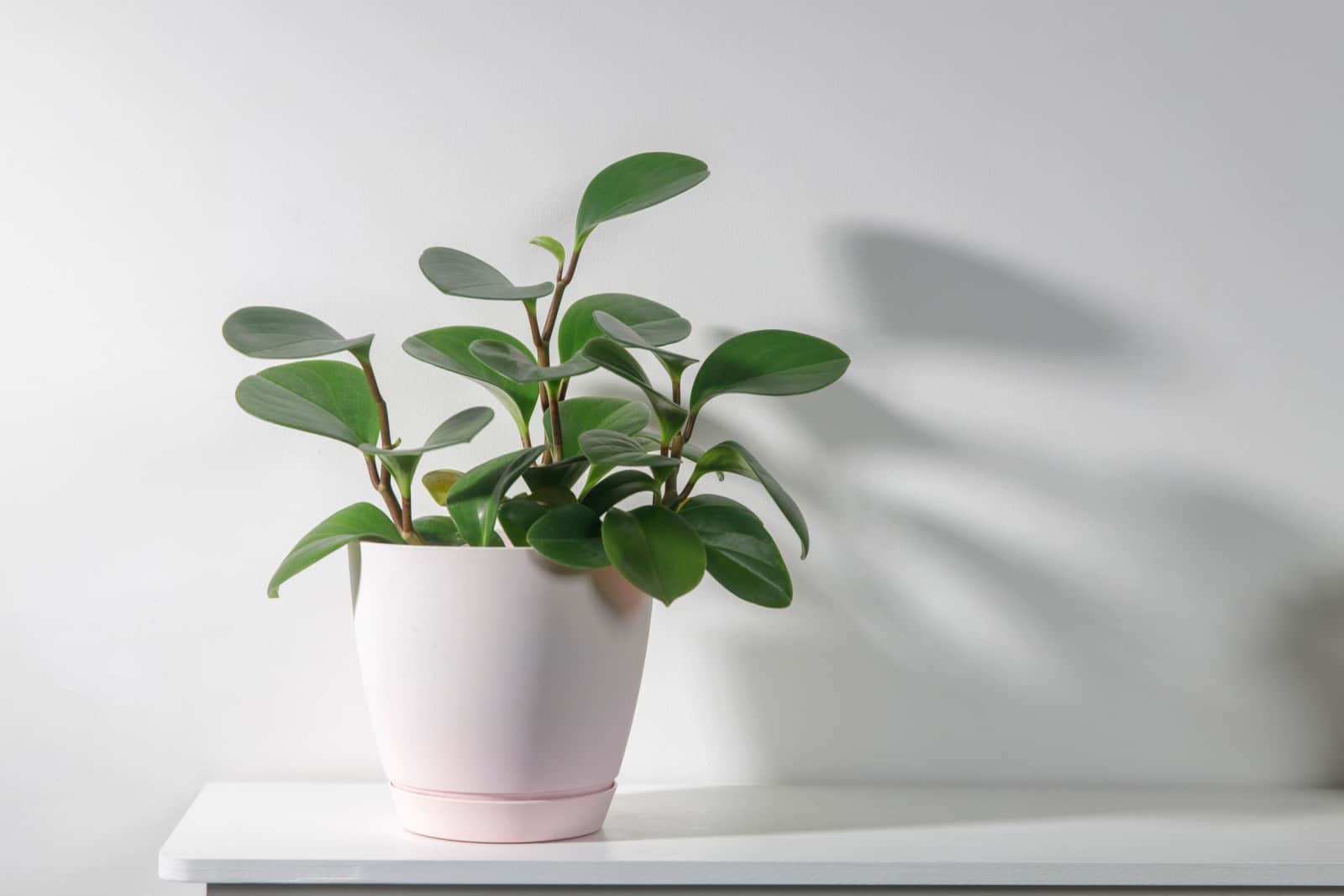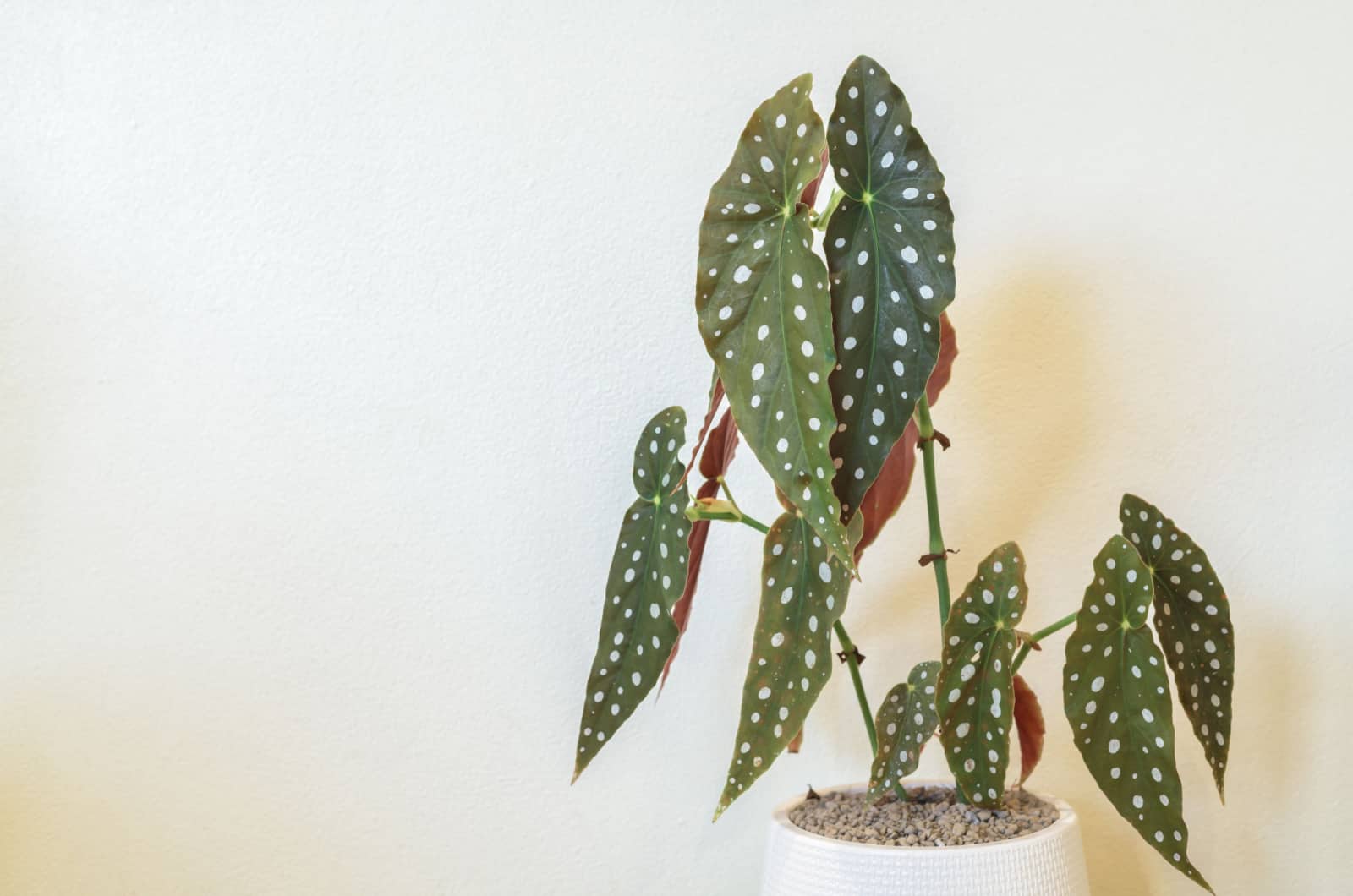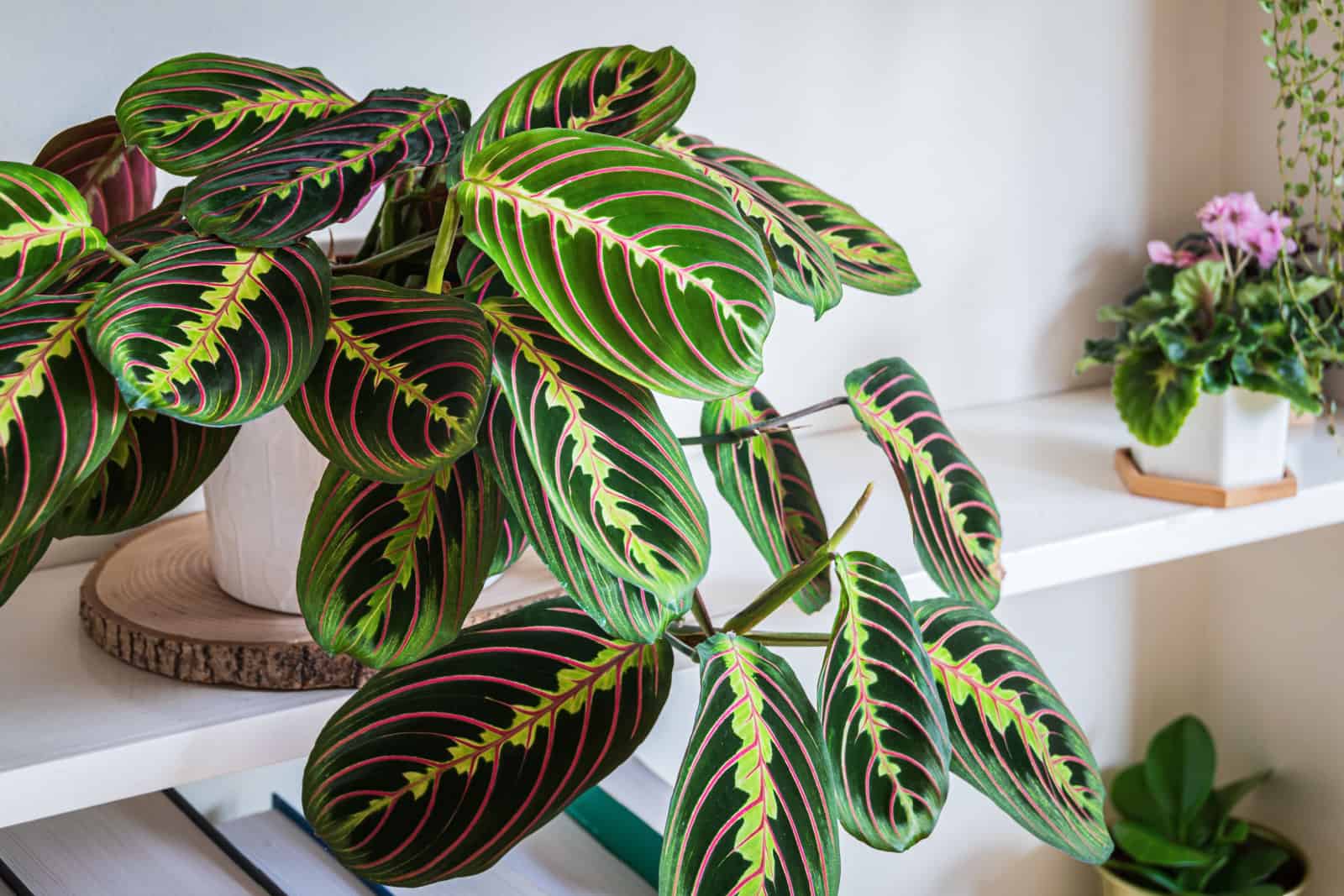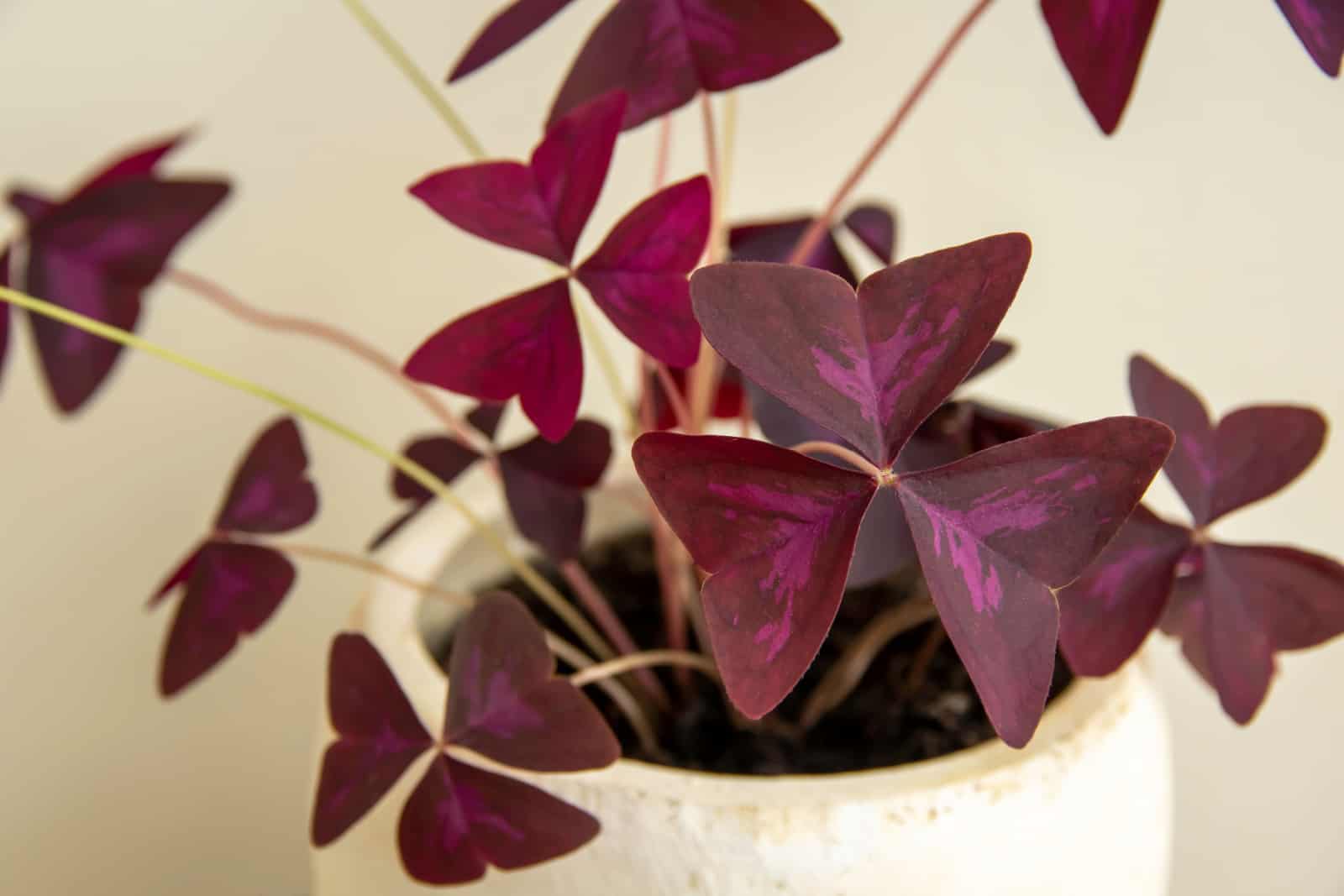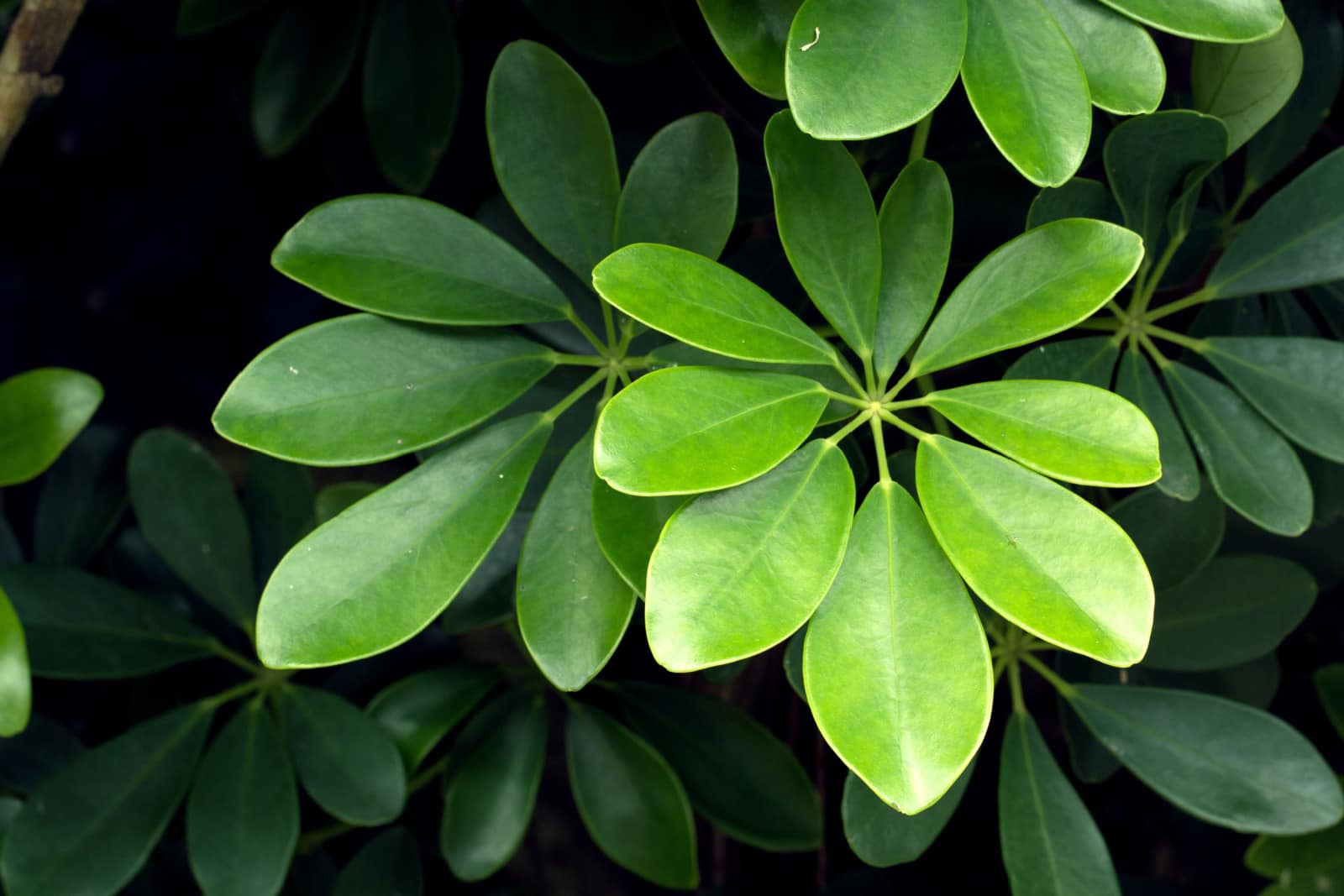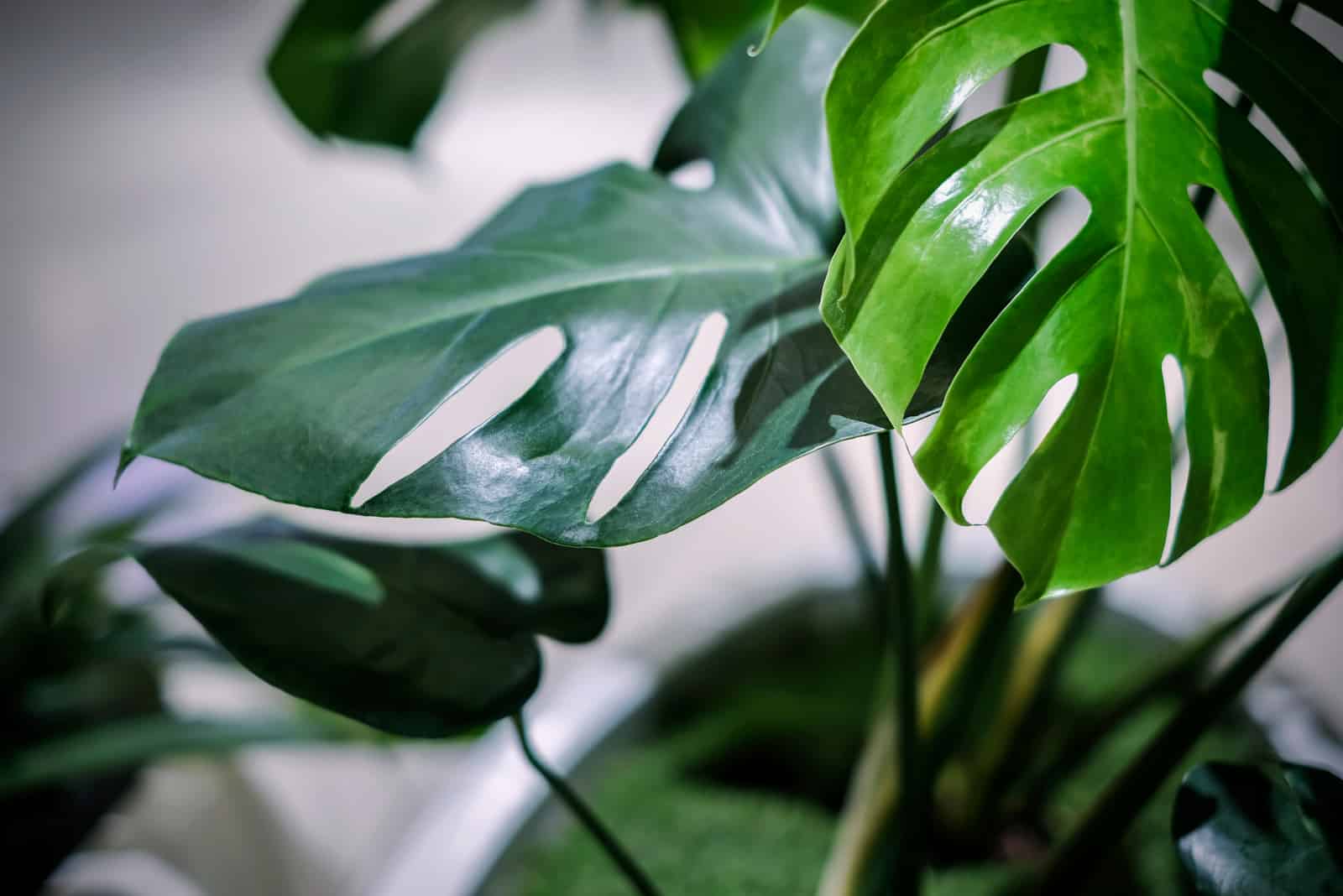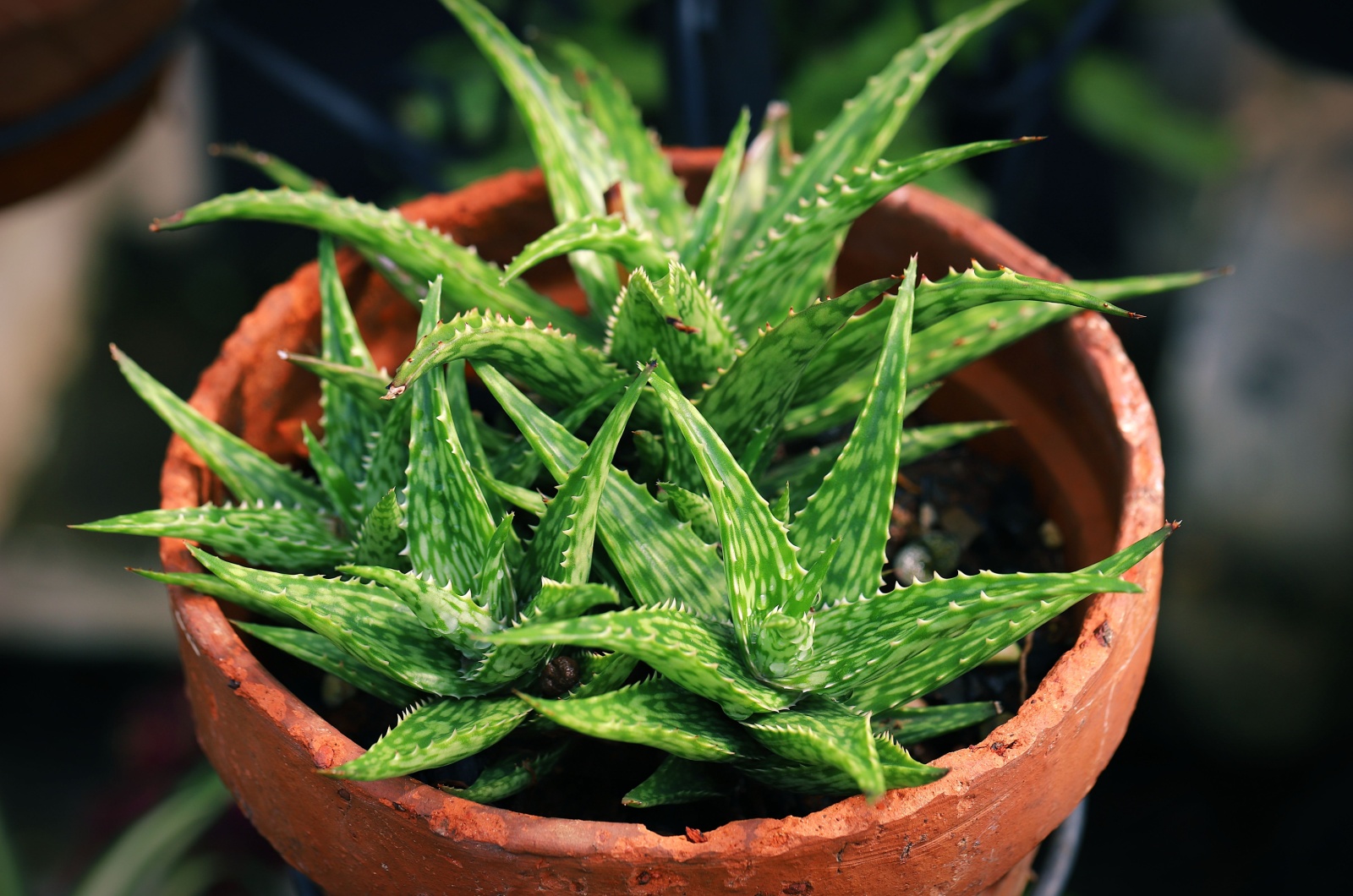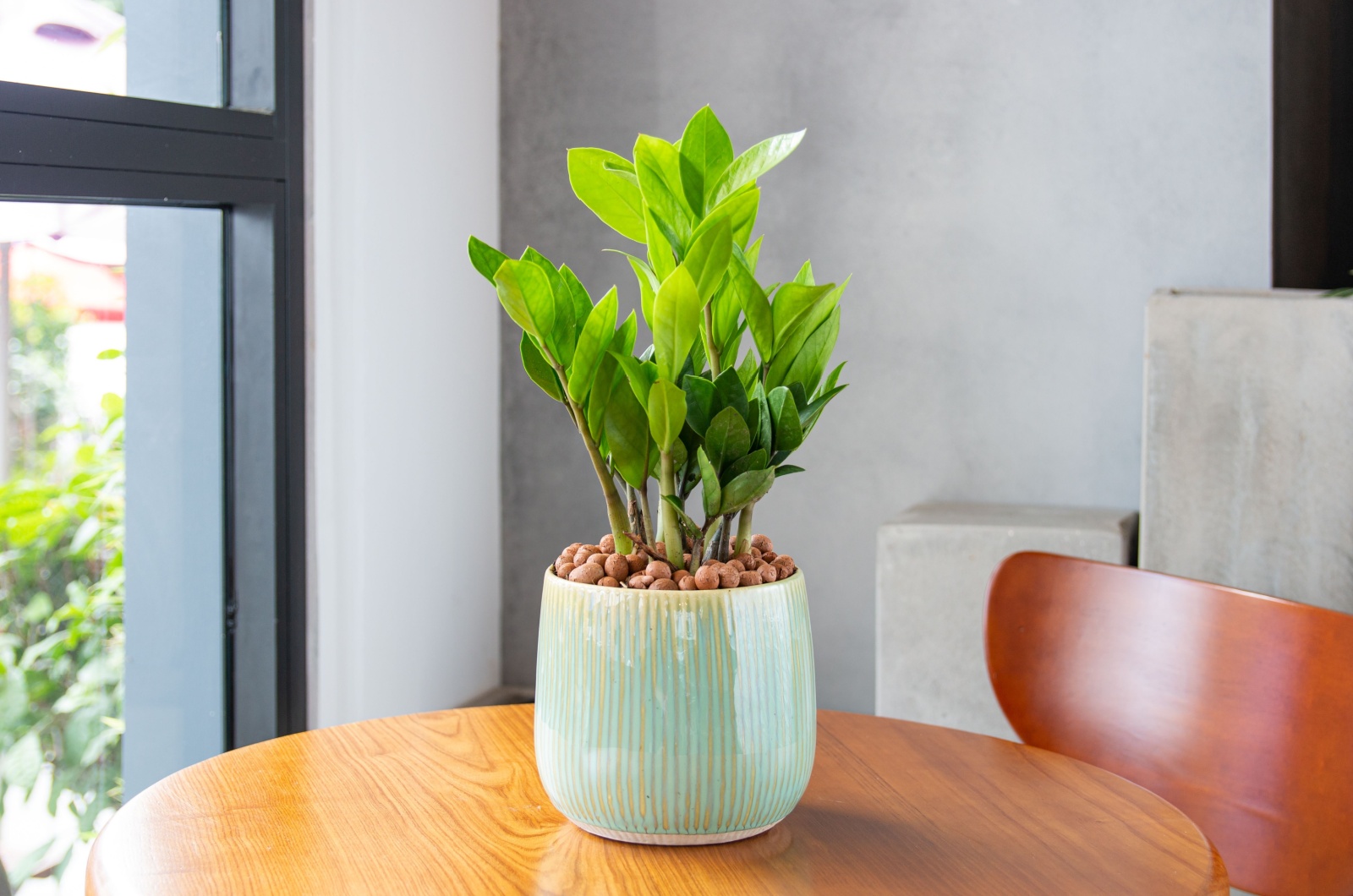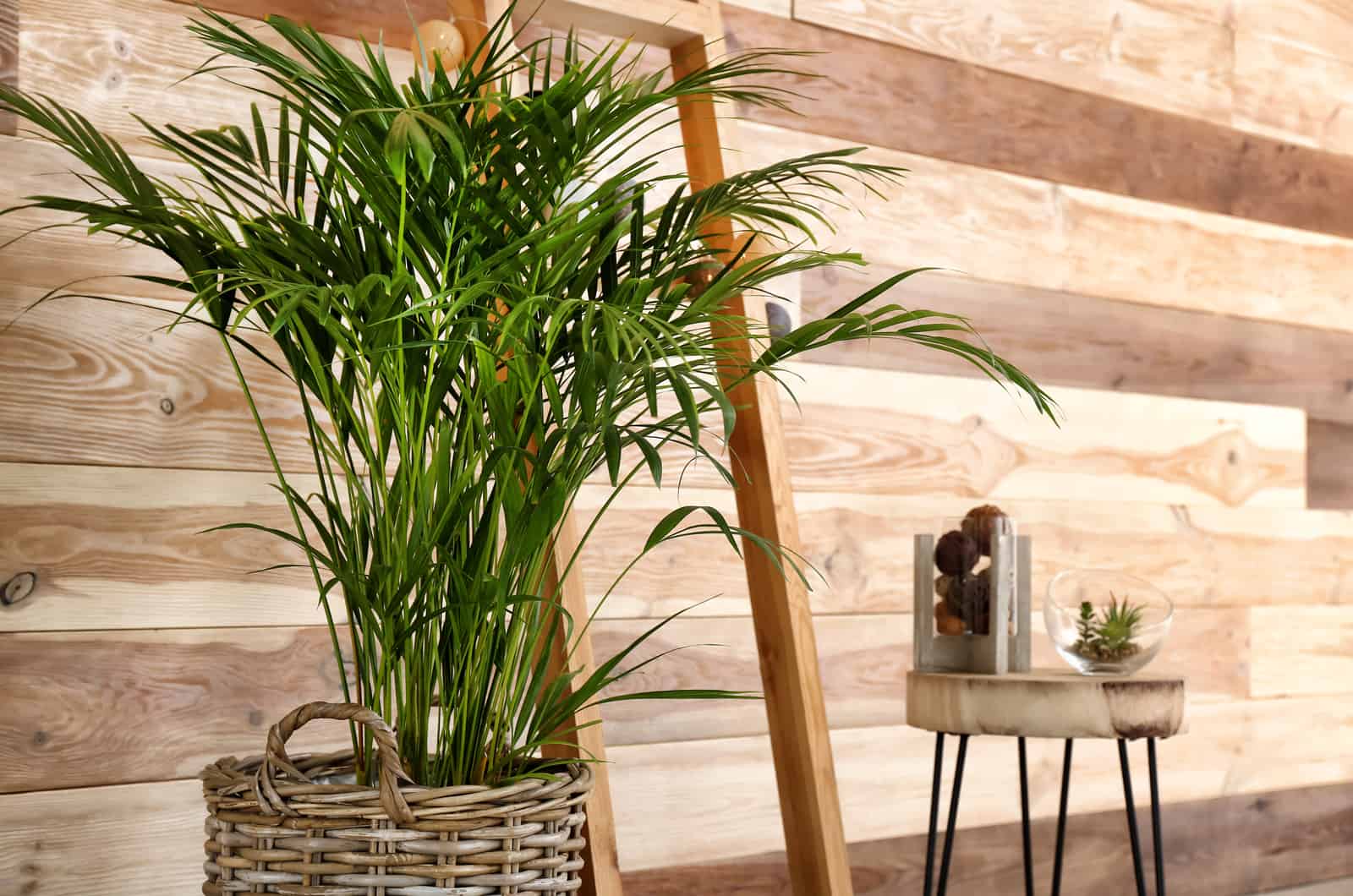Every home needs an orchid or a succulent to decorate the windowsills, but it may be difficult to decide which one is perfect for you.
It’s simple – just look at their light requirements and choose the prettiest one suitable for your home!
Many plants prefer morning or afternoon sunlight; some need direct sun for at least six hours a day to grow healthily, while others tolerate low-light conditions.
In today’s article, we’ll talk about 19 east-facing window plants that can beautify your home.
The plants from the list below thrive in the morning sunlight, so growing them near east-facing windows is perfect.
We’ll mention their basic needs so that you can decide whether a particular plant is the right fit for you.
Let’s dive right in!
1. Anthuriums
Anthurium plant light requirements are straightforward; it needs bright indirect light during the day, and you can provide that by giving your plant eastern exposure.
Plant it in well-draining soil such as orchid mix amended with some peat moss and sand, and water it once the top few inches of the growing medium are dry.
This tropical plant thrives in high humidity, though, so make sure to use a humidifier or mist it from time to time.
You can opt for a wide range of anthurium varieties, whether you want emerald-colored foliage or green leaves streaked with white veins.
2. Areca Palm (Dypsis Lutescens)
The V-shaped fronds of areca palms ornamented with golden petioles are one of the best ways to get that beach vibe at home. This palm tree thrives in indirect sunlight, and any bright part of your home is perfect.
(With the accent on east-facing windows, as they provide direct sun in the morning when it’s not that harsh and cannot hurt your areca’s foliage.)
This is a low-maintenance plant that you don’t have to irrigate frequently. Water it twice a month or whenever you feel that the topsoil has dried out.
Plant it in fertile, aerated, and well-drained soil, and feed it twice a year during its growing season with a slow-release palm tree fertilizer.
3. Boston Fern (Nephrolepis Exaltata)
The Boston fern has many cultivars, but gardeners adore the fluffy ruffle fern with its bushy and velvety fronds which narrow toward the tip.
It looks incredible in hanging baskets or regular pots, so you don’t have to worry if you don’t have much space on your eastern windowsill.
Plant it in a mix with good drainage, fertilize it once a month with a houseplant fertilizer, and irrigate it once the top part of the soil feels dry to the touch.
4. Calathea Sanguinea
Provide calathea sanguinea with eastern exposure, and you’ll quickly see how its variegations become more and more vibrant.
The bottom sides of the foliage are pink, while the top parts of the green leaves are adorned with eye-catching pink and creamy variegations.
Its plant care isn’t that complicated, and all you need to do (apart from providing it with the morning sun) is grow it in a well-draining medium and a pot with drainage holes.
You can also feed this calathea with a regular houseplant fertilizer, use a humidifier to increase humidity levels to at least 50%, and water it when the top couple of inches dry out.
5. Croton Petra (Codiaeum Variegatum)
The Croton petra is another variegated leafy plant that requires medium light to shine. The colors change based on sun exposure, and the more light the plant gets, the more vibrant its foliage becomes.
Young foliage is green, but the leaves obtain alluring yellow, orange, or pink shades as they mature.
The care guide for the croton petra is easy to remember; plant them in fertile and well-draining soil and water them once the medium starts to dry.
Use a humidifier to increase air moisture levels, and boost their growth with a nitrogen-rich organic fertilizer once a month.
6. Fiddle Leaf Fig (Ficus Lyrata)
The Fiddle leaf fig is one of the most popular ficus varieties, along with the rubber plant. The large and glossy foliage of the fiddle leaf fig looks like small fiddles and usually crowds at the top of the plant.
You can place it near a window so that it can see the sun rise and bask in its morning glory.
This ficus is a popular houseplant that doesn’t need too much of your attention, so even beginners can try growing it.
Use a pot with drainage holes filled with well-draining and nutrient-rich soil, and water it once the soil dries out.
You can also feed your fiddle leaf fig with a nitrogen-rich fertilizer once or twice a month during the growing season.
7. Goldfish Plant (Columnea Gloriosa)
The goldfish plant is one of the most interesting plants we have ever encountered. Its fleshy and deep green leaves are eye-catching, but they’re not the plant’s most prominent feature. This plant produces flowers that look like yellow, orange, or red goldfish without the airy fins.
It doesn’t do well in direct sun, but the morning light of an east-facing window won’t do it any harm.
This breathtaking hanging plant requires a substrate with good drainage, and you can make it by mixing one part perlite and two parts soil mix.
Feed the goldfish plant with fish emulsion and water it once a week during its growing season and every other week during dormancy.
8. Heartleaf Philodendron (Philodendron Hederaceum)
Philodendrons are aroids that usually contain calcium oxalate, which are crystals that can cause skin irritations, nausea, vomiting, excessive drooling, diarrhea, etc.
These plants also look amazing, which makes it so hard for pet owners to decide whether to get one!
(You can always elevate them so your dogs or cats cannot reach them).
The Heartleaf philodendron is one of the prettiest varieties because of its shape and lush green color, but you can always opt for other vining or upright species.
Philodendrons need enough light to keep their natural shade, so grow them near east-facing windows. Plant them in a fertile aroid soil mix with good drainage and aeration, and feed them with a fertilizer specialized for leafy plants.
Water your philodendrons whenever you feel that the topsoil has dried out, which is usually once a week during the growing season and twice a month when they enter dormancy. (You might need to irrigate them more frequently if the weather is scorching!)
9. Jade Plant (Crassula Ovata)
If you want a perfect low-maintenance plant for beginners, try succulents. These species don’t need too much care to give their best.
The jade plant is a succulent with many benefits, such as improving indoor humidity and air quality, reducing stress and anxiety, etc., as well as being pretty to look at. It can have deep green, red-framed, or gray-green foliage that adorns the tiny trunks and branches.
The Crassula ovata grows best in indirect sunlight, and if you don’t have enough room on your east-facing windowsill, you can always place it near a west-facing one and protect it with a sheer curtain.
The soil for this plant needs to drain quickly, and since it is a slow-growing plant, you shouldn’t fertilize it too often, or you’ll risk fertilizer burn.
Feed it 2-3 times a year with a succulent fertilizer, or make your own if you prefer organic gardening.
10. Japanese Fatsia (Fatsia Japonica)
This plant is also known as the paper plant, and it is a fantastic landscape addition. And the good news is that you can grow it indoors near your east-facing windows.
Its deep green and glossy foliage form bushes and give this plant a tropical vibe. It blooms in fall and produces circular, airy flowers.
The Fatsia japonica needs an acidic, fertile, and well-draining growing medium, but will tolerate heavier or sandier soils.
This plant is quite durable and can endure a certain amount of air pollution and shade. Irrigate it once half of the substrate is dry and feed it in spring with a slow-release fertilizer suitable for shrubs.
The good news is that it can thrive at moderate humidity levels, so you won’t have to worry about that.
11. Monstera Adansonii
There are many monstera varieties, and adansonii cultivars are simply breathtaking.
They have large punctures, slits, or small holes, can be entirely green or variegated, and shaded with white and creamy colors.
And they all have the same needs, so you can get as many as you’d like.
They prefer eastern exposure, where they can enjoy the direct sun in the morning and indirect sunlight in the afternoon.
Grow them in a pot with drainage holes filled with well-draining and aerated substrate, fertilize them once a month with a general-purpose fertilizer, and water them whenever the topsoil dries out.
These are low-maintenance plants, so you won’t have to prune them frequently; just remove old and diseased foliage, and you’re good to go!
12. Moth Orchid (Phalaenopsis)
Orchids are definitely one of the most beautiful plants you can grow in your home. They can be yellow, pink, variegated, blue, white, red, etc., and they can bloom all year long if you give them everything they need.
Provide them with morning sun, plant them in an orchid potting mix, and fertilize them with orchid fertilizer, following the instructions on the package.
Water the phalaenopsis whenever you notice that its roots are thin and silvery instead of chubby and bright green.
13. Peace Lily (Spathiphyllum Wallisii)
The peace lily is a common houseplant that has everything a plant should have; lush and vibrantly green leaves and stunning white flowers!
This plant doesn’t require too much attention, but if you neglect it or water it too often, you’ll soon notice that your peace lily is turning black.
To avoid this, you should grow this beautiful plant near an east-facing window so it can enjoy the morning sunlight without getting sunburned.
Water it only when the topsoil starts to dry, and fertilize it every 4-6 weeks with a regular houseplant fertilizer.
Finally, make sure your peace lily is planted in well-drained soil and that its container has at least one hole in the bottom.
14. Peperomias
There are so many peperomia varieties and cultivars out there that we simply cannot choose which one to include in our list.
There are emerald green peperomias with jewel-like foliage and red or burgundy ones for more adventurous growers. You can choose less or more textured species, variegated, with accentuated veins, rubber-like, etc.
The options are endless!
And the best part is that they all have the same needs, so you don’t have to choose just one. You can get them all!
They’ll have enough light to thrive on an east-facing windowsill. Plant them in a nutrient-rich and well-draining substrate, and feed them with liquid fertilizer during their growing season to see them thrive.
Water your peperomias 2-3 times per week during the hot summer days, but reduce irrigation as the weather cools down. Check the soil before watering to be 100% sure your peperomia is thirsty.
15. Polka Dot Begonia (Begonia Maculata)
If you want an east-facing window plant to decorate your home, try something fancy and wild at the same time – the polka dot begonia!
This variety has one of the prettiest leaves the world has ever seen. They resemble olive-green angel wings and are dotted with silvery beads or marbles, and all this is accentuated by maroon undersides.
Grow it in bright indirect light and high humidity, plant it in soil with good drainage and aeration enriched with organic content, and irrigate it thoroughly once the topsoil dries out.
Pour water slowly until you notice that it has started to drain through the potholes. Let the excess moisture drain, and you’re done!
16. Prayer Plant (Maranta Leuconeura)
All prayer plants look amazing and have this adorable habit of folding their foliage at night – just like they’re praying!
The maranta is a variegated plant that can be completely green with dark, almost black shades that follow the midrib (middle vein of a leaf).
But something happens, and the plant suddenly gains red veins, the midrib gets decorated with light green shades, and the parts between the red veins become darker.
If you want the best variegations, you should keep this plant in the indirect sunlight from an east-facing window and plant it in a nutrient-rich medium with good drainage.
Feed it with a liquid fertilizer such as 10-15-10 throughout its growing season and water it whenever the top part of the substrate is dry.
17. Purple Shamrock – False Shamrock (Oxalis Triangularis)
The purple, or false shamrock, is one of the prettiest decorations for modern and predominantly white home decor.
Its triangular foliage is a deep purple that will add a splash of color to your home, and it can reveal tiny white or light pink blossoms that are a game changer.
It looks amazing in regular pots or hanging baskets and needs just a bit of morning sun to obtain its mesmerizing shade.
Plant it in a loamy or sandy, well-drained substrate and irrigate it once the topsoil dries out. You can fertilize your purple shamrock with a liquid houseplant fertilizer during its growing season.
And if you want it to adorn your landscape, you can switch to slow-release fertilizer, following the instructions on the back.
18. Dwarf Umbrella Tree (Schefflera Arboricola)
This fast-growing tree might have “dwarf” in its name, but it can still reach impressive heights (but nothing compared to traditional varieties).
And if you don’t have enough space, you can always grow it as a bonsai!
The umbrella tree got its name from its shape – it genuinely looks like an umbrella. Its trunk is thin, and the leaves are long and deep green, although they can put on lighter and even variegated shades.
The plant can become leggy in low-light conditions, so make sure to place it on an east-facing window where it can receive the best care it needs.
Plant it in an aerated and well-draining substrate rich in organic material, fertilize it once a month during its growing season, and water it 1-2 times per week, depending on the temperature.
You should occasionally clean the dust from its leaves so it can photosynthesize without hindrance.
19. Vining Swiss Cheese Plant (Monstera Deliciosa)
And last, but not least, the Monstera deliciosa – the most popular monstera variety!
This Swiss cheese plant is perforated, has slits when it matures, is dark, and vines and climbs a moss pole – in a word, a true beauty.
This monstera requires bright indirect light in order not to turn leggy, so an east-facing window works perfectly.
Grow this tropical plant in an aroid potting mix that is aerated and well-drained, and feed it with a nitrogen-rich fertilizer just like your other leafy friends.
Water your Swiss cheese plant whenever the top few inches of the growing medium dry out (which can be every 1-2 weeks or more frequently, depending on the temperatures).
Best Houseplants For South-Facing Windows
We mentioned some of the best east-facing window plants you can grow, but did you know that you can grow most of them on south-facing windows as well?
That’s because the conditions aren’t that different, and the sunlight is equally mild in the morning and late afternoon.
However, if you want to grow different plants in the southern corner of your home, you can try decorating it with plants suitable for south-facing windows. Try growing a ponytail palm, aloe vera, hibiscus, bird of paradise, etc., and combine them with some of the plants mentioned above.
Best Plants For West-Facing Windows
West-facing windows are the most luminous because they are lit with direct sun most of the day. Still, there are plants that you can put near western windows, such as English ivy, dracaenas, certain succulents and cactuses, begonias, etc.
However, some of these plants cannot handle too much direct sun, so you should protect them with sheer curtains or place them a few feet away from the window where light cannot burn them.
Best Indoor Plants For North-Facing Windows
North-facing windows are the darkest, and there aren’t many plants that can grow in low-light levels without becoming leggy.
But you don’t have to be afraid of this part of your home because there are plants that will thrive in north-facing windows. You can try growing snake or spider plants, pothos, ZZ plants, nerve plants, etc., since they can tolerate shade better than other varieties.
However, not even these species can grow in utter darkness, so if you notice that they’ve become leggy or turned yellow, move them to a brighter spot or get some artificial lights.
Final Thoughts
We presented 19 amazing east-facing window plants that can decorate your home. Species such as monsteras, philodendrons, peperomias, anthuriums, moth orchids, etc., are all perfect because they need bright indirect light to thrive, and eastern windows offer them just that.
We included descriptions and short care guides for each of these plants so that you can decide whether they’re suitable for you and your home.
Finally, we also examined some plants appropriate for other windows in your home so you can create a personalized botanical garden.
Enjoy your new decor, and until next time!
Like this post? Share or pin it for later!

